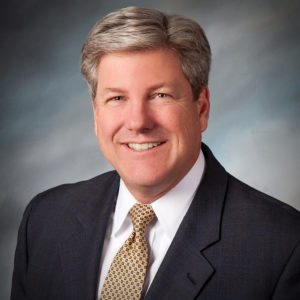By Knut A. Rostad
Originally published on ThinkAdvisor.com, September 27, 2016
Last week the Institute for the Fiduciary Standard announced the Best Practices Fiduciary Advisor Affirmation Program. The program is designed to fill a gap in federal regulatory compliance and advisor group codes of conduct—a gap that has left too many investors receiving questionable product recommendations under the guise of fiduciary advice.
Best Practices are crafted for the world of 2016 where the DOL Fiduciary Rule, new investor attitudes and new technology are altering the advice landscape. There is more convenience, choice and access to new resources, data and services. The 21st century fiduciary advisor / client-centric paradigm has emerged. Advisors are left to define it.
Despite this bright picture a dark cloud hovers above. It is the cloud of investor distrust that persists years after the market lows of early 2009. While research on low trust levels is compelling (and ‘bipartisan’) the advisory industry appears unconcerned. At least as is evident in their public statements and actions.
There are exceptions, of course. CFA Institute – rather loudly – highlights its ‘Putting Investors’ First’ campaigns and publicly acknowledges there is a problem. Advisor leaders such as Tom Nally, Ron Carson and Mark Tibergien have spoken out. So has Merrill Lynch’s John Thiel. But these voices, along with some others, are exceptions to the rule of silence.
Today’s investors ask more questions and want more transparency, clarity and honesty. And concrete actions. As Michael Maslansky, a financial language expert, says, “Words in the absence of deeds will fail.”
Best Practices are defined by deeds and crafted in plain language understandable and verifiable by investors. This means an investor knows a Best Practices advisor is required to:
- Put into writing that fiduciary duties apply at all times – not just sometimes.
- Give advice that’s reasonable – and explain the advice in writing if asked.
- Put important agreements and disclosures in writing.
- Provide estimates of total client fees and costs in writing at the start of the relationship and then afterwards annually on request.
- Avoid conflicts – and if not possible disclose in writing, manage, and for important conflicts, get client consent to proceed with conflicted transactions .
- Avoid principal trades – unless the client initiates a request.
- Avoid compensation from client transactions – and, if not possible, show how the product recommendation serves a client’s best interest.
- Avoid gifts and entertainment that are not minimal and occasional.
- Have the appropriate base and ongoing education to render competent advice.
- Use an investment policy statement or process and provide a sample if asked.
- Make sure fees and expenses are reasonable.
- Affirm in writing adherence to Best Practices and the Best Practices can be met.
Best Practices are unique in the realm of advisor credentials. They focus on advisor behavior more than they do advisor knowledge. They define “best interest” in common circumstances and commonsense actions.
They spur investor understanding and confidence. Being unique, they merit evaluation independent of dissimilar designations or certifications. Here are five reasons advisors will value Best Practices.
1) ‘Best Practices’ are more rigorous and investors will see it. An advisor will, for example, put in writing that sh” acts as a fiduciary for all clients at all times, discloses fees and expenses concretely in a dollar amount or % of AUM, and sets out conflicts and explains in writing how they are mitigated.
2) The Best Practices compliance feature is more rigorous. The program requires that language expressing adherence to Best Practices be placed on the advisor’s ADV Part II, and the specific requirements of the Best Practices Code be placed on the advisor’s website. This is in a public statement to investors and regulators.
3) Best Practices are written in plain language investors can understand.
4) ‘Best Practices’ are based on advisor deeds. Deeds investors believe are important to credibility and trust. The Best Practices advisor, without uttering a word, “speaks” loudly in simple actions such as putting agreements and disclosures and services and fees and expenses in plain language and clear writing.
5) Advisors who subscribe to the Best Practices will be put on the Registry of Best Practices Fiduciary Advisors, which will be widely communicated and publicized to investors and media.
Best Practices are unique. They champion the importance of behavior. They follow in the spirit of financial planning leader Lynn Hopewell who wrote in the FPA Journal in 1989 that professionalism was not about government regulation or “whether you have letters after your name,” but rather, “on how you behave. We will become a profession only after we behave like one.”

